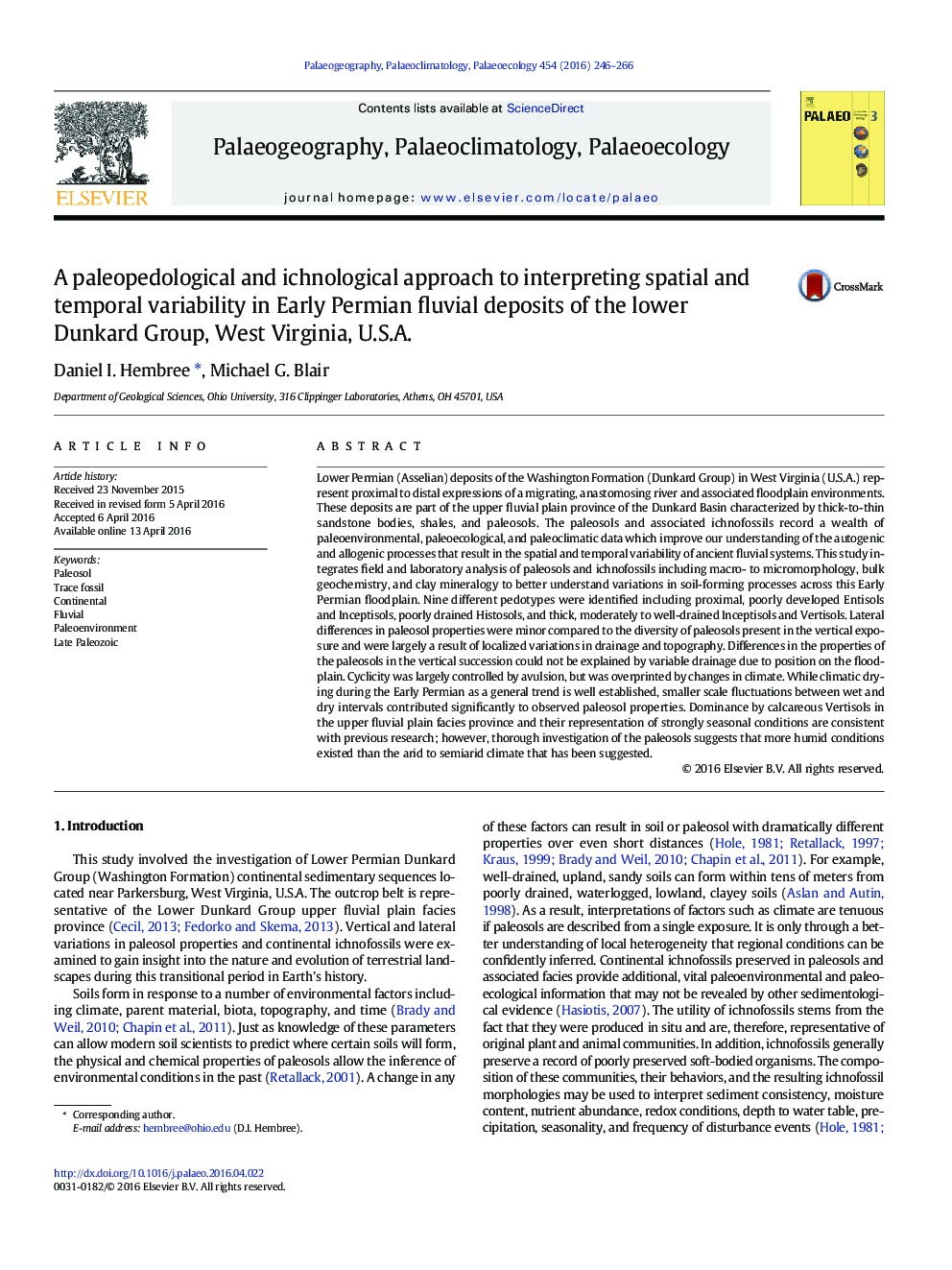| کد مقاله | کد نشریه | سال انتشار | مقاله انگلیسی | نسخه تمام متن |
|---|---|---|---|---|
| 4465611 | 1622137 | 2016 | 21 صفحه PDF | دانلود رایگان |

• We differentiate nine pedotypes from proximal to distal floodplain subenvironments.
• Lateral changes in paleosols reflect changes in local topography and hydrology.
• Vertical changes in paleosols reflect changes in precipitation and seasonality.
• Ichnofossils record abundant floodplain flora and limited soil animal activity.
• Paleosol properties suggest a strongly seasonal, but still subhumid, climate.
Lower Permian (Asselian) deposits of the Washington Formation (Dunkard Group) in West Virginia (U.S.A.) represent proximal to distal expressions of a migrating, anastomosing river and associated floodplain environments. These deposits are part of the upper fluvial plain province of the Dunkard Basin characterized by thick-to-thin sandstone bodies, shales, and paleosols. The paleosols and associated ichnofossils record a wealth of paleoenvironmental, paleoecological, and paleoclimatic data which improve our understanding of the autogenic and allogenic processes that result in the spatial and temporal variability of ancient fluvial systems. This study integrates field and laboratory analysis of paleosols and ichnofossils including macro- to micromorphology, bulk geochemistry, and clay mineralogy to better understand variations in soil-forming processes across this Early Permian floodplain. Nine different pedotypes were identified including proximal, poorly developed Entisols and Inceptisols, poorly drained Histosols, and thick, moderately to well-drained Inceptisols and Vertisols. Lateral differences in paleosol properties were minor compared to the diversity of paleosols present in the vertical exposure and were largely a result of localized variations in drainage and topography. Differences in the properties of the paleosols in the vertical succession could not be explained by variable drainage due to position on the floodplain. Cyclicity was largely controlled by avulsion, but was overprinted by changes in climate. While climatic drying during the Early Permian as a general trend is well established, smaller scale fluctuations between wet and dry intervals contributed significantly to observed paleosol properties. Dominance by calcareous Vertisols in the upper fluvial plain facies province and their representation of strongly seasonal conditions are consistent with previous research; however, thorough investigation of the paleosols suggests that more humid conditions existed than the arid to semiarid climate that has been suggested.
Journal: Palaeogeography, Palaeoclimatology, Palaeoecology - Volume 454, 15 July 2016, Pages 246–266